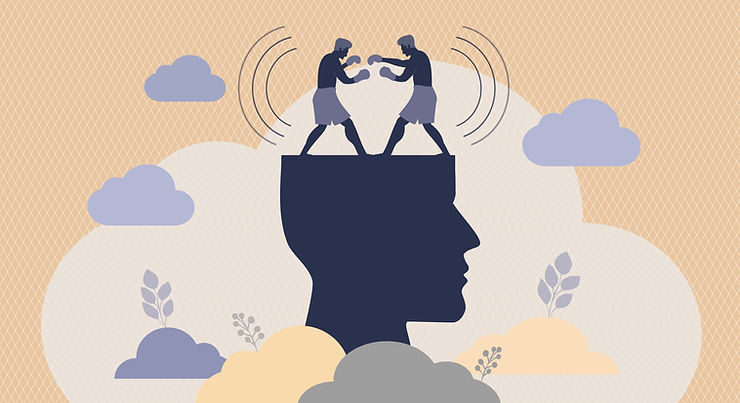By Laura Jean Anderson, M.D. and
VanBuren Ross Lemons, M.D.
What is Cognitive Dissonance?
It is the mental discomfort that results from holding two conflicting beliefs, values, or attitudes. People tend to seek consistency in their attitudes and perceptions, so this conflict causes feelings of unease or discomfort.
How do you know you are suffering from Cognitive Dissonance?
-
Feeling uncomfortable before doing something or making a decision.
-
Trying to justify or rationalize a decision you’ve made or action you have taken.
-
Feeling embarrassed or ashamed about something you’ve done and trying to hide your actions from other people.
-
Experiencing guilt or regret about something you’ve done in the past.
-
Doing things because of social pressure or a fear of missing out (FOMO), even if it wasn’t something you wanted to do.
-
Imposter Syndrome, or feeling like a fraud. This usually refers to a pattern of behavior where people doubt their accomplishments or have an internalized fear of being exposed as a fraud.
Tests carried out by neuroscientists, Michael Gazzaniger and Roger Sperry, on patients who had the two hemisphere of their brain separated by cutting the connective tissue (the corpus Callosum) showed that the right side thinks differently from the left. Whilst it’s not quite as cut-and-dried as that, there are functions that either side carries out the other has no knowledge of.
We know this to some extent because of severe sufferers from epilepsy would sometimes have the connective tissue between the two brain hemispheres, the Corpus Callosum, cut. This was helpful in dramatically reducing epileptic seizures. Mostly, after their operations, their behavior afterwards appeared to be reasonably normal and meant that epileptics could lead relatively normal life.
The right hemisphere is mostly responsible for more of your creative, conceptual, holistic, and intuitive thinking. Let’s say its more emotional.
The left hemisphere is more responsible for analytic and logical thought. It has reasoning and language skills and has the ability to act as your personal narrator. It makes it up! It confabulates stories, after the event to make sense of what it has observed and perceived.
The neuroscientist David Eagleman (https://eagleman.com/) imagines our brains as riotous and rebellious parliaments which are locked in a battle for domination. The end result of this battle is, behavior. The implication is that behavior happens first and the explanation, the cause and effect, follows. Actions often happen before we attach meaning and understanding. We make logical stories, out of events that have already happened. These stories are made consistent with our world-view. It would seem we have no access to reality in real time!
Cognitive Dissonance is a real phenomenon and can affect people in many ways. For more information, reach out to Dr. Anderson and Dr. Lemons about it.



